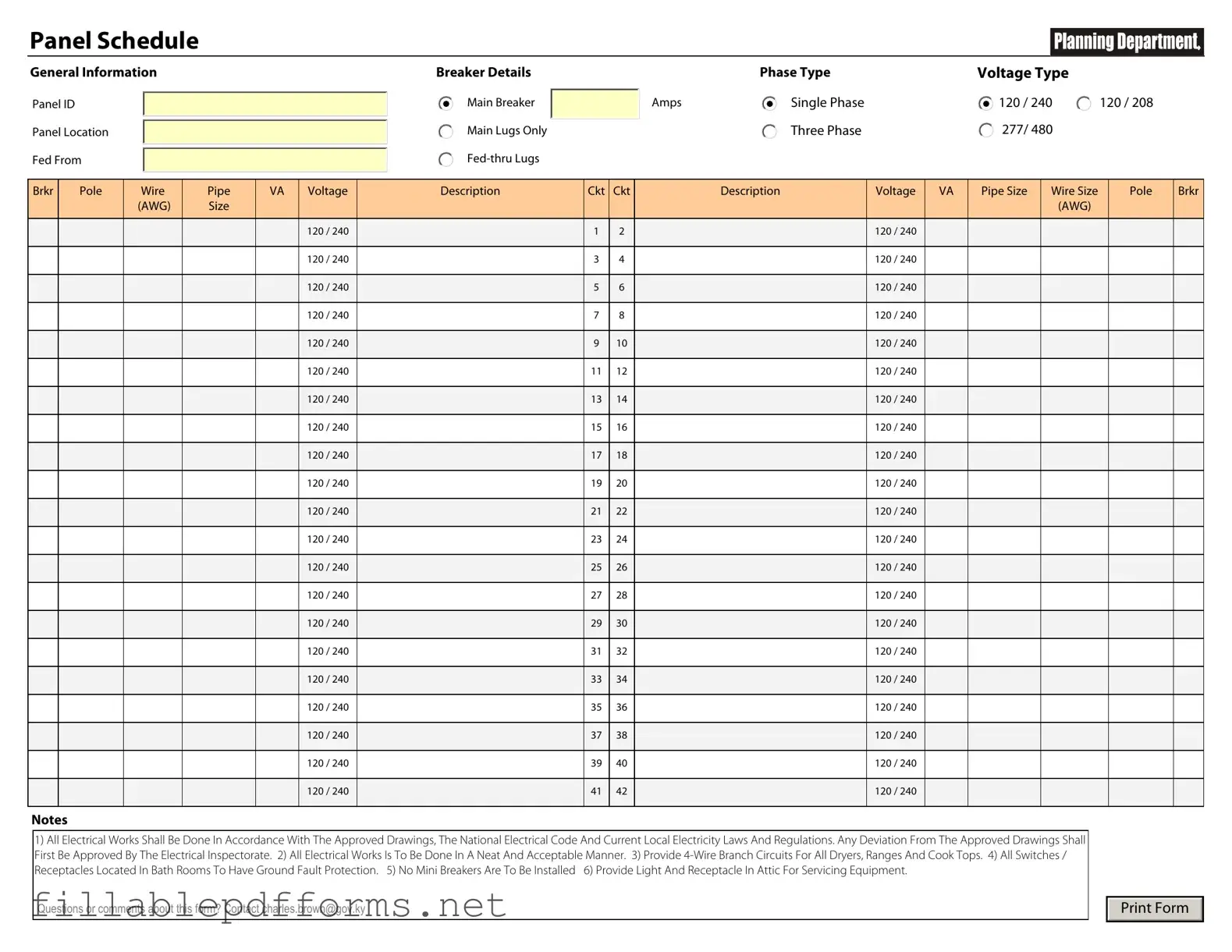Electrical Panel Schedule PDF Template
The Electrical Panel Schedule form is a crucial document used to outline the distribution of electrical circuits within a building. It provides a clear overview of circuit loads, breaker sizes, and other essential details necessary for safe electrical management. Understanding this form is vital for both homeowners and professionals to ensure compliance with safety standards and efficient energy use.
Launch Editor Here
